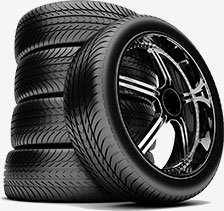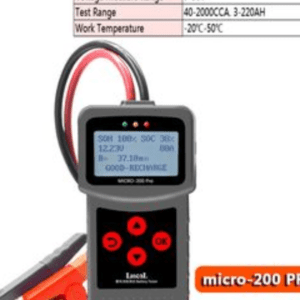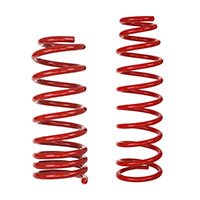How to stop transmission from slipping
How to stop transmission from slipping.
How to stop transmission from slipping
To deal with any slipping transmission can be a significant problem with any car; this is especially with automatic transmissions. It’s one of the many issues with your car that starts as a minor issue and then quickly worsen, becoming more expensive. Please you should never delay in repairing a slipping transmission.
Note that there isn’t a transmission slipping quick fix, and not all transmission slipping problems means your transmission is failing/has failed. However, before showing you how to stop a transmission from slipping, let’s see slipping transmission causes first.
Causes Of Transmission Slipping – Why Is My Transmission Slipping?
- A Low Fluid
Out of the various slipping transmission causes, the most common is having low fluid levels. However, this happens from the vast ways in which low fluid levels can negatively impact your car. This is from not producing enough hydraulic pressure for engaging gears to overheating.
Go to the dipstick in your engine compartment and examine if is low fluid levels that is causing your problem. Note that the system for the transmission is closed, and because of this, it should never have low levels. But if there are low fluid levels, then you may be dealing with a leak.
- A Burnt Fluid
Note that sometimes the transmission slipping is because of the fluid burning instead of being low. However, if your fluid is black or you notice a smell similar to burnt toast, then it’s likely the culprit. A burnt fluid can happen whenever the transmission overheats.
When this happens, you will need to quickly swap out your transmission fluid. And after that, you’ll need to have a technician examine your transmission to ensure there is no further damage.
- Problems with Clutch
Remember that both automatic and manual transmissions use clutches. But while manual transmission slipping is likely due to clutch issues, it’s a possible cause for an automatic transmission slipping. While in an automatic, the transmission and torque converter have clutch plates that can burn or become worn out because of insufficient transmission fluid.
- A Worn Gear
Note that your gears will start to wear out as your car get older. It’s completely natural and occurs because of wear and tear. Remember, gears can also wear out from malfunctions. So if the gears are frayed or worn, they will not link together very well, leading to bumpy shifting.
- Solenoid Issues
The solenoid in your car is an electro-hydraulic valve that is responsible for controlling fluid flow in the transmission. Meaning once this component has electronic issues or suffers damage, it will not dispense the appropriate amount of fluids, which leads to issues like transmission slipping.
- Having Problems with the Torque Converter
Note that the torque converter converts the engine’s power so it is torque. This is the form of power that the transmission can use. And over time, the torque converter can wear down.
Whenever it functions properly, the fluid will flow through your torque converter. But if the fluid does not flow properly, the transmission can misbehave in various ways, including slipping.
- Damages to the Transmission Bands
Sometimes your transmission bands can become broken or worn over time, which leads to the transmission slipping. Note that the bands are responsible for connecting your automatic transmission’s gears together. But you can overcome this cause by replacing or adjusting the defective band(s)
How To Stop Transmission From Slipping
Once the slipping is caused by ineffective fluid or lower fluid levels because of a leak, then you may be able to fix the problem yourself by examining and replacing the fluid or by repairing/plugging the leak.
This is because fixing more serious problems such as worn or broken bands, clutches and gears require removing and taking apart the transmission. Meaning these procedures should only be attempted by those with significant auto repair experience. https://kctimoauto.com/product/motorcraft-mercon-lv-atf-1ltr/
https://kctimoauto.com/product/motorcraft-mercon-lv-atf-1ltr/
- The Low Fluid Level – Check and Top-Off
Another way to stop the problems is to regularly monitor your fluid level. You can do this once a month (every two weeks if you drive a lot). Just open the hood, locate the transmission dipstick, and inspect the ATF level. Please always do this with the engine running, because the internal pump has to be running for it to get an accurate reading.
However, if the fluid is dark, unusually thin, dirty, or has a burnt smell, have it replaced immediately. But if it’s below the optimum level indicated on the dipstick, then add more fluid immediately to prevent further damage.
Note that there are several different types of ATF, examine your owner’s manual to ensure that you get the exact type of fluid (using the wrong kind of fluid can actually cause serious damage). Normally, you add fluid to an automatic transmission by placing a funnel into the dipstick tube. But if you’re unsure, refer to your owner’s manual.
- The Burnt or Worn Out Fluid – Drain & Refill
In case your automatic transmission fluid needs to be replaced, you can either do it yourself or have a mechanic do it for you. Sometimes it can be a messy job, and it does require a bit of mechanical experience to do it properly.
To do this, here is the process you should follow:
- First thing is to jack the vehicle up and unbolt the pan. Then the ATF will drain as you do this, just place a catch pan and a tarp underneath it
- Now remove and replace the filter
- Then scrape off the old transmission pan gasket and replace
- Now bolt-on the pan and fill with ATF
- Now you can start the vehicle and check for leaks
- You can now use copious amounts of kitty litter to clean up the mess that you’ve just made
The Fluid Leak – Replace Part(s) or Take it to a mechanic
In case your transmission is leaking fluid, you need to find the source. Most experienced car owners usually research the vehicle-specific symptoms, replace the offending parts, and then fix the problem.
But in case you’re not comfortable fixing the problem yourself, find a mechanic repair shop immediately. Else, that little transmission leak can wind up creating a much bigger, costlier problem for you.
Conclusion on how to stop transmission from slipping
Note that there isn’t a transmission slipping quick fix. This issue starts as a minor and then quickly worsen, becoming more expensive. So please you should never delay in repairing a slipping transmission.




















